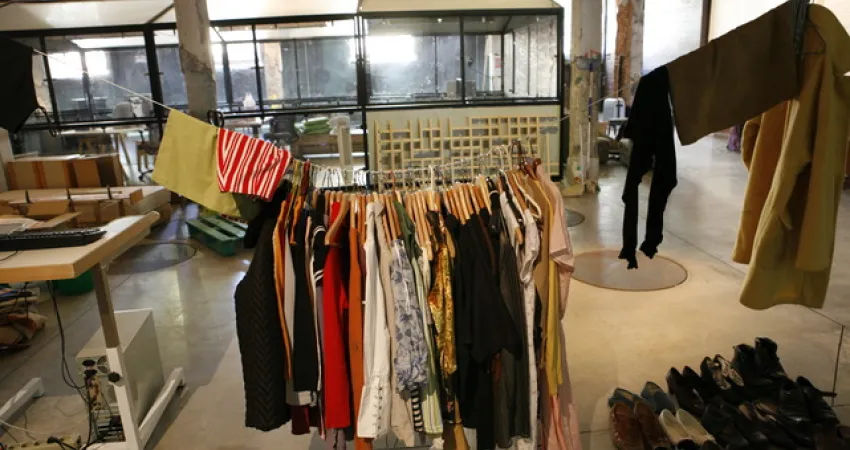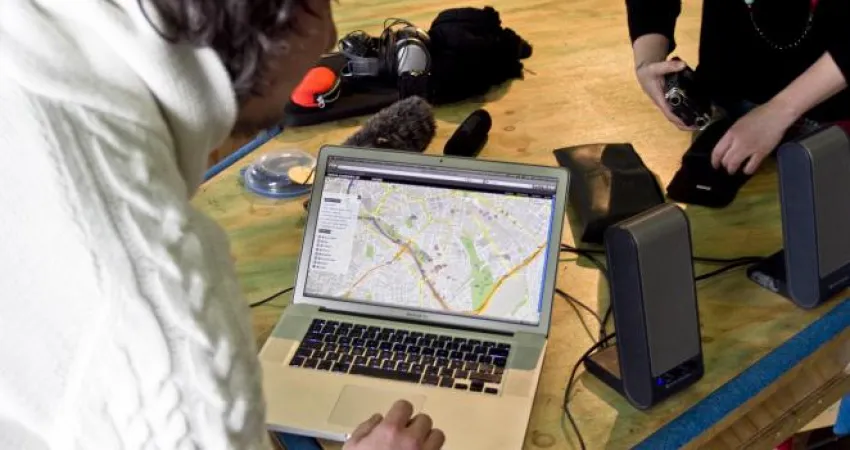Descripción
Testimonios futuros (Future Testimonies), 2005/07
Audiovisual installation.
Projection on 6 floating screens with soundtrack in stereo.
Duration: 54´.
In recent years, Bárbara Fluxá has been developing an art project as an experimental work in progress which transforms and adapts to varying media, spaces and platforms under the general title Des(h)echos. (Deshecho – undone/broken; desecho – waste). The central idea is the analysis of contemporary cast-off material as a reflection of our society. Testimonios Futuros (Future Testimonies) is an audiovisual installation from the Des(h)echos project, a reflection and visual investigation about material culture and the construction of its memory, its relation to nature, and landscape as cultural construction.
:TREATMENT OF THE SURROUNDINGS:
The work gathers images and sounds related to water and the surrounding areas (highways, train tracks, vegetation, animals, etc.). The first tapes highlight the colour of fresh water, woods along the riverbanks, fallen leaves on the surface of the river, with subtle sounds; the last tapes are centred on the port with its piers and partially abandoned boats, with the sound of the sea in the background.
Visually, the setting is wet, abstract and mysterious. Mainly underwater close-ups mixed with exterior images of the immediate surroundings; always floating naturally on the surface or beneath it. Images that represent a possibly subjective view of debris drifting down the river make up the piece.
Visual play among the surface of the water, its depths, and nature is added to the close-ups of leaves that approach and move away from the camera (the eyes of our object). The leaves, woods on the riverbanks, herons, ducks, and reeds surround the strange object with their presence and sounds, and the object has no alternative but to let itself be led through the area.
The movement of the camera is that of a floating object drifting down a large river. The movement is mainly slow and serene. The object flows along, carried by the currents toward the sea. Once there, the images and sounds pick up speed as the waves spin and hit the object, which is caught up in uncontrollable movement until the sea spits it out onto the beach.
Editing of the image is kept to a minimum; the filming was manipulated as little as possible. The work respects the object's natural route and flow. Six 54" tapes were shot in long shots, starting at an inland location (the bank of an urban settlement) until it reaches a beach on the coast. Through viewing the six screens, we watch the object’s eight kilometre route, seen as a subjective long shot, with no cuts or editing at all.
:SOUNDTRACK:
The soundtrack for the video installation is based on real sounds recorded on the tapes during filming. The sound of rapids in the river merges with a train going by or a wave crashing loudly. The audio, synchronized at certain moments with the images on one of the screens, also serves as general ambient sound and as a testimony of the sound of the object’s journey.
:EDITING OF VIDEO INSTALLATION:
Each of the six videos is shown on an independent floating screen, set out in a hexagonal arrangement. During the 45’ screening, the six screens are seen simultaneously.
:AUTOGRAPHIC TEXT:
“…and the discarded, destroyed object is transmuted into a necessary, ancestral reminder.”
With this apt phrase, Pepe Marín Medina ended the fantastic text he wrote for the catalogue for “Las cosas en su lugar” (Things in their place), the exhibit that was part of my project Des(h)echos, developed over a large part of recent years.
This project analyzes contemporary society through its consumer goods, their relationship with the environment, and their impact on the future. The objects produced by consumer society are interpreted as a cultural product that transforms the environment, nature, or the territory into a cultural landscape, given that, as Medina said in the same text, “the history of humans, like the history of culture, is the process of the transformation of the world”.
Through dozens of sculptures and photographs, contaminated by certain archaeological strategies, the product shows the consumer object in a humanized way, as the result of the complex process of constructing our material culture. The idea for the work that I am currently developing and presenting at Intermediae arose as a result of playing with the humanization of objects and is called “Testimonios Futuros” (Future Testimonies). It is an audiovisual work (in the format of a six-screen video installation), where free rein is given to the play of a double perspective. In this case, a story is not told from the artist’s external view but instead, the object has the chance to present its own interpretation of the process and transformation of our environment: through the subjective long shot, it gives testimony.
Bárbara Fluxá, 2007
Agentes
Further information:
barbarafluxa.blogspot.com
Detalles
Creativity arts grants programme 2007
barbarafluxa.blogspot.com
From January 24th to February 17th
Opening Thursday 24 November at 7 p.m.



 Intermediae
Intermediae

